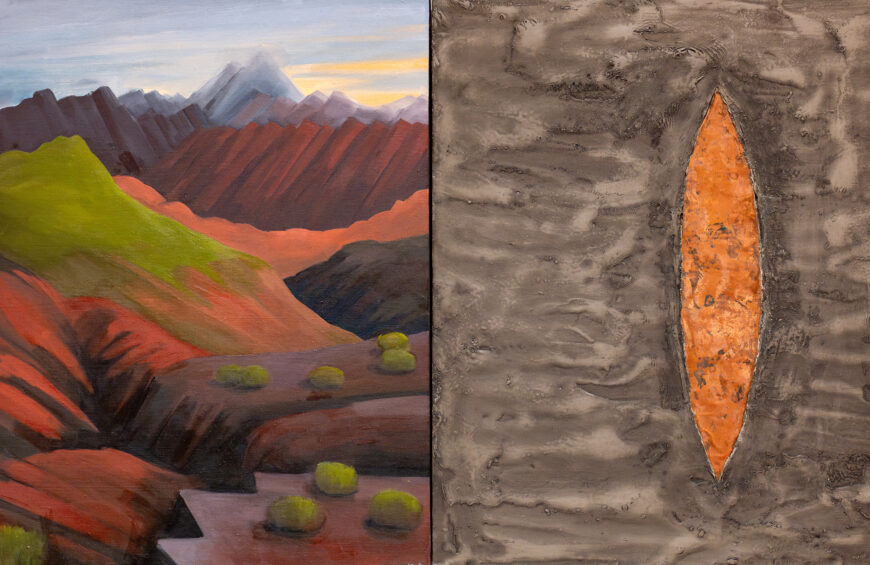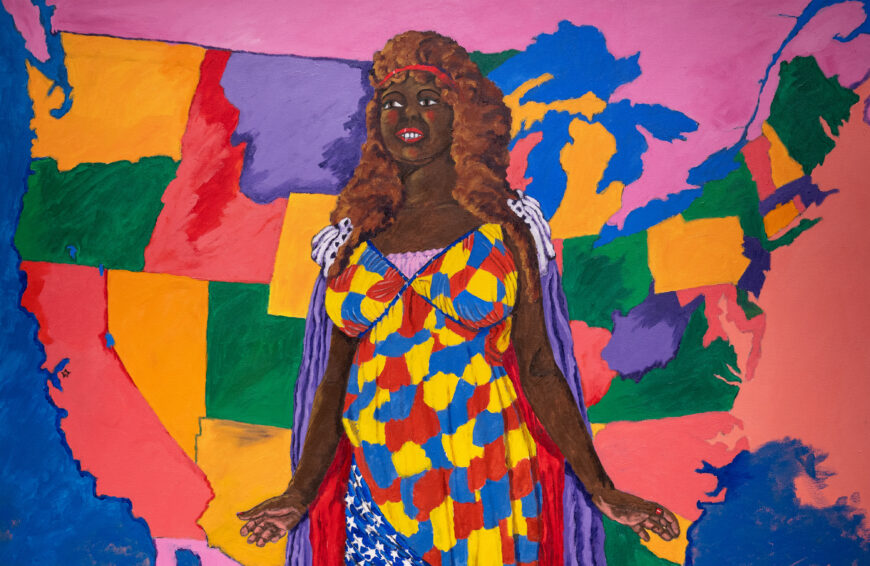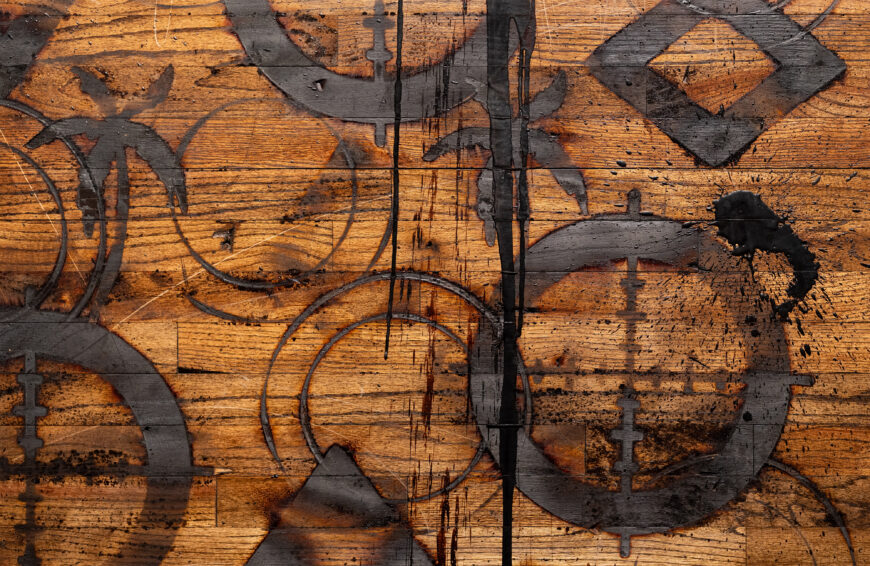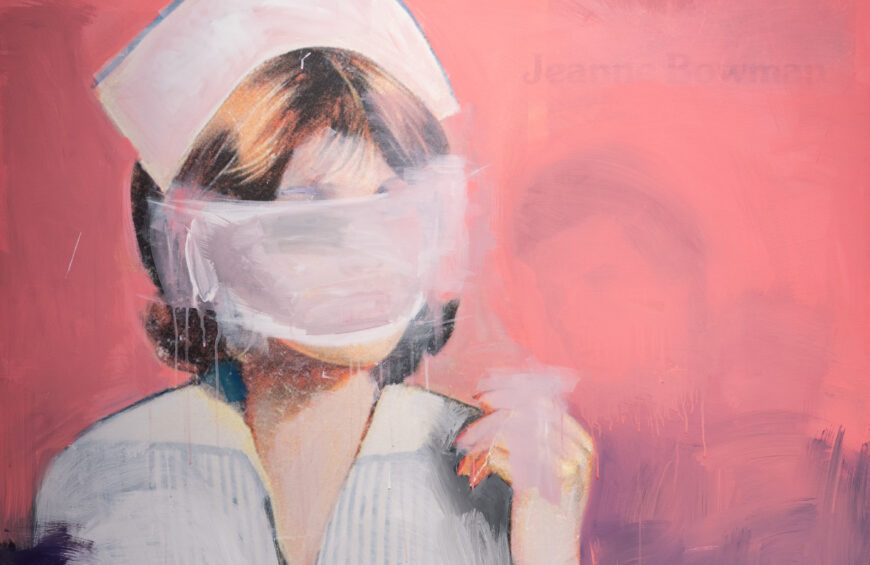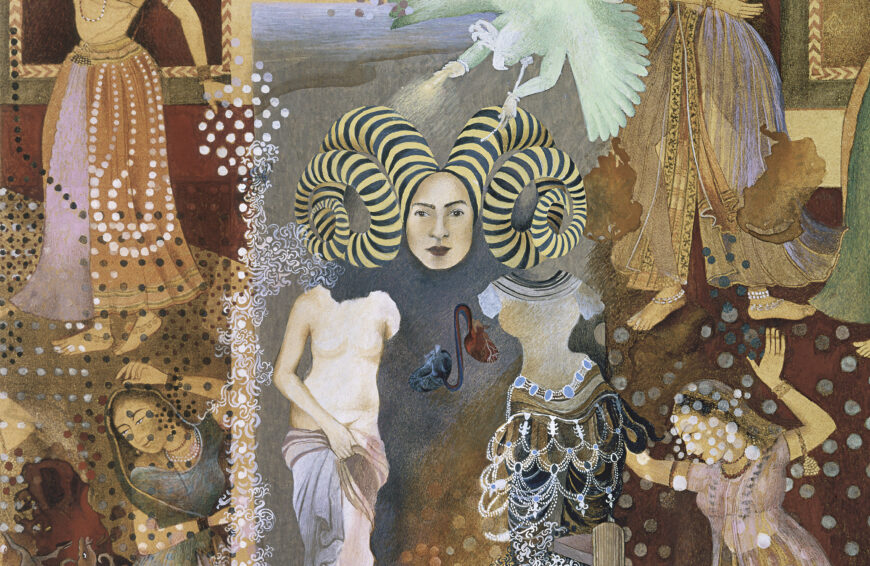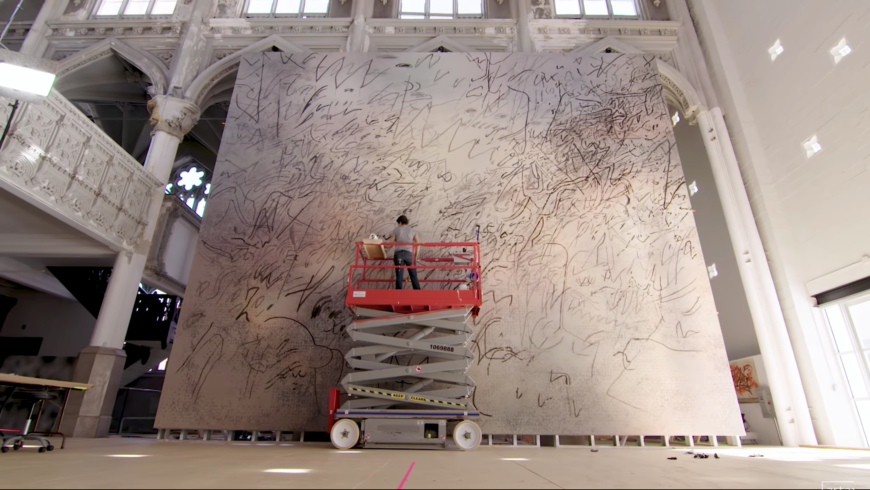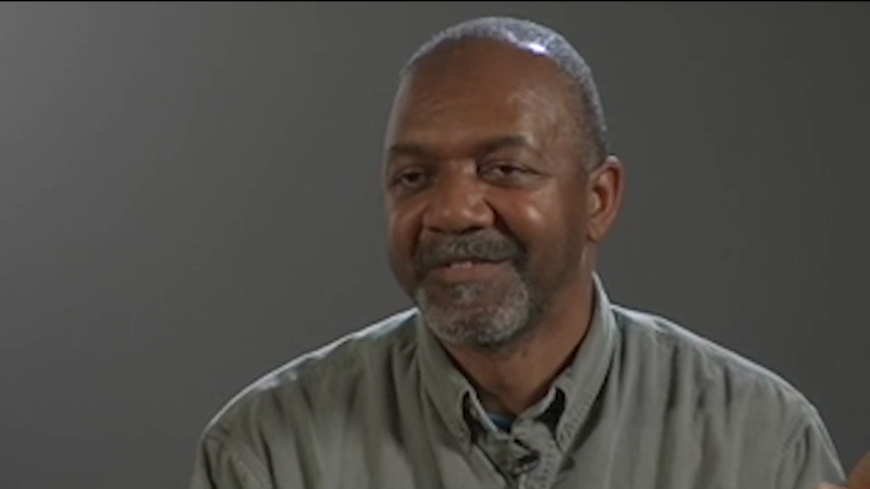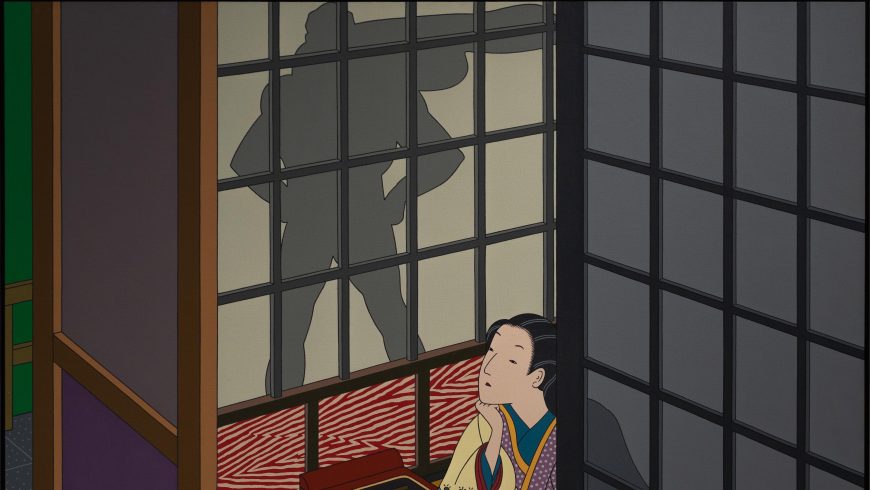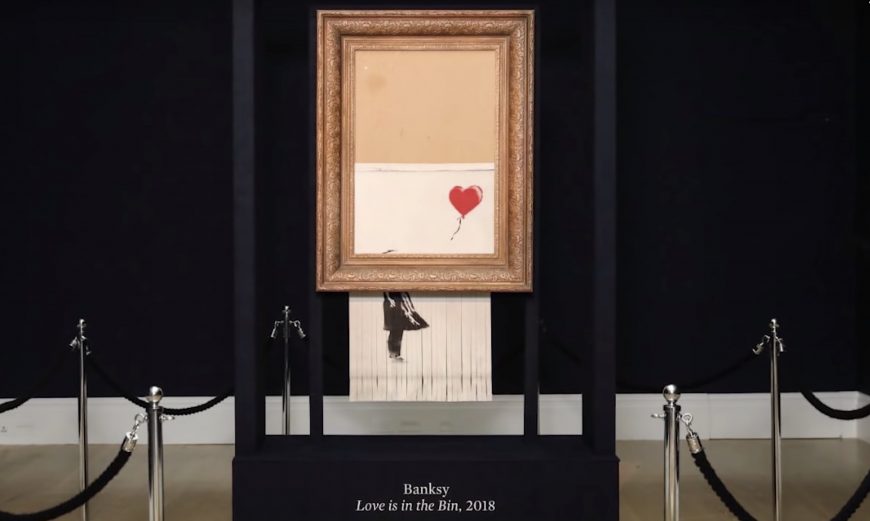A partially obscured figure crouches over a historical map of Hispaniola in an act of anticolonial resistance.
Firelei Báez, Untitled (A Correct Chart of Hispaniola with the Windward Passage), 2020, oil and acrylic on printed canvas, 264.8 x 311.8 cm (Crystal Bridges Museum of American Art, Bentonville) © Firelei Báez. Speakers: Dr. Xuxa Rodríguez, former Associate Curator, Contemporary Art, Crystal Bridges Museum of American Art, now Patsy R. and Raymond D. Nasher Curator of Contemporary Art, Nasher Museum of Art at Duke University and Dr. Beth Harris
[music]
0:00:06.6 Dr. Beth Harris: We’re looking at a painting by Firelei Báez, Untitled, and in parentheses, A Correct Chart of Hispaniola with the Windward Passage. It’s difficult not to be overwhelmed by the beauty of the color and the size of this painting.
0:00:23.0 Dr. Xuxa Rodríguez: Lots of deep maroons, bright neon pinks, almost like flashing oranges and yellows amongst white and blue and green spilling across the canvas.
0:00:33.2 Dr. Harris: What we notice immediately is that the background is a map in black and white, and that we have a figure crouching on an area of the map showing the island of Hispaniola.
0:00:45.8 Dr. Rodríguez: It’s a historical map showing Hispaniola as named by its invaders, the Spanish, as well as trade routes going across and through like constellations that connect those colonizers with their ports of origin.
0:00:58.8 Dr. Harris: This is the site where Columbus landed in 1492. This is the beginning of European colonization.
0:01:07.1 Dr. Rodríguez: The significance of not just a Caribbean, but specifically the island she’s crouching on that we now know today as Haiti and Dominican Republic, named by its Indigenous peoples, the Taínos, as Ayiti and Quisqueya, and so what was considered a discovery for those colonizers, the Spanish, the French, the English, was really spaces that were known historically and had texture and contours to Indigenous peoples of the region who were decimated by the disease brought over across the ocean.
0:01:35.6 Dr. Harris: So we have this figure who dominates this map that is a signal to me, of European Enlightenment, of the desire to map the world, to travel the world, to colonize the world, to name it, classify it, especially all those efforts by Europeans in the Americas.
0:01:54.0 Dr. Rodríguez: Yes. And the figure is one of Báez’s cosmic women. There is a suggestion of resistance through the fact that we can’t see her, we can’t identify her.
0:02:02.7 Dr. Harris: The fact that the artist refers to this figure as a cosmic woman makes me think about the cosmic, world-changing consequences of what happened in this place.
0:02:14.1 Dr. Rodríguez: And especially when we look at the shadow cast over not just the island of Hispaniola, but also the Caribbean at large as it goes off the canvas as well.
0:02:22.0 Dr. Harris: I feel like I see worlds and galaxies and planets.
0:02:26.1 Dr. Rodríguez: This is something that for Báez is a meditation she continues to have on other worlds, other futures, especially reflecting on the idea of Drexciya, which is this idea of a Black Atlantis of folks who survived being thrown off of the sides of ships. When you look at this map, what’s not said is the number of lives lost that we continue to discover.
0:02:46.6 Dr. Harris: There are areas where the paint is more transparent and areas where it’s more opaque, where we can’t see the map through.
0:02:52.5 Dr. Rodríguez: And this is something that scholars have talked about, is a sense of opacity, not just within Báez’s work, but opacity as a side of resistance, the refusal to be known, to be seen, to be identified, which is really when you think about the history of colonization and invasion and folks were coming and trying to identify and give new names for peoples, places, and things that were already known, so resisting that knowingness is a very powerful position to be in.
0:03:19.0 Dr. Harris: And there are some areas where the paint feels almost still wet, where it’s congealing, almost like it’s a magical substance.
0:03:27.7 Dr. Rodríguez: That happens as we move off of the island, up into the other space, the hemisphere, the heavens even.
0:03:33.0 Dr. Harris: The artist is herself from the island.
0:03:37.2 Dr. Rodríguez: Báez has roots across both Haiti and the Dominican Republic, thinking of those two feet that are separate, of the fact that the figure is in the center of the island, calls up the Haitian Revolution for me and the self-liberation of Haitian peoples from French oppression and colonization.
0:03:50.6 Dr. Harris: And there are some areas where I feel like I’m looking at an ocean, swirls of water reminding me of the Middle Passage.
0:04:00.8 Dr. Rodríguez: In the name, the Windward Passage.
0:04:01.2 Dr. Harris: This was a passage that linked the Atlantic Ocean to the Caribbean.
0:04:05.7 Dr. Rodríguez: And we can see it clearly marked in this map. In fact, there’s other parts that don’t have as much presence outside of, say the name of the island of Cuba, or even here across the Dominican where it says Spanish Quarters, so there’s these little moments where she allows this highlight to happen through the map itself, revealing more information, but then also the figure, covering up other information that’s not necessarily, I think, important for us to know so much as to sit with the figure and have this moment of reflecting on what is not being represented.
[music]


